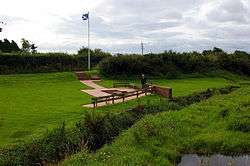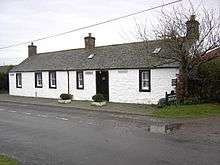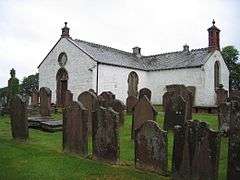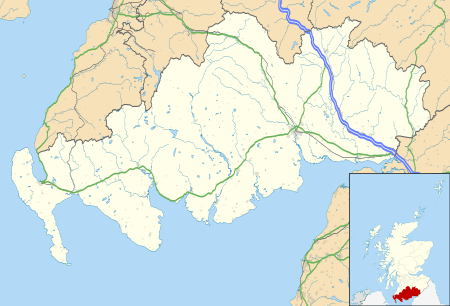Ruthwell
Coordinates: 54°59′36″N 3°24′27″W / 54.9934°N 3.4076°W
Ruthwell is a village and parish on the Solway Firth between Dumfries and Annan in Dumfries and Galloway, Scotland.
Ruthwell's most famous inhabitant was the Rev. Dr. Henry Duncan. He was a minister, author, antiquarian, geologist, publisher, philanthropist, artist and businessman. In 1810, Dr. Duncan opened the world's first commercial savings bank, paying interest on its investors' modest savings. The Savings Bank Museum tells the story of early home savings in Britain.
In 1818, Dr. Duncan restored the Ruthwell Cross, one of the finest Anglo-Saxon crosses in the United Kingdom, now in Ruthwell church, which had been broken up in the Scottish Reformation. This cross is remarkable for its sculpture and inscriptions in Latin and Old English, some in Anglo-Saxon runes, which include excerpts from The Dream of the Rood, an Old English poem. After the Disruption of 1843 in the Church of Scotland, Dr. Duncan became one of the founding ministers of the Free Church of Scotland.
During his youth, Robert Murray M'Cheyne spent summer holidays at Clarence Cottage in the hamlet of Clarencefield near Ruthwell, the home of his maternal aunt. During these visits he would often call to see "Uncle" Henry Duncan at the manse. M'Cheyne's parents were born in this part of Scotland.

The Brow Well is situated 3 km west of the village of Ruthwell. This well, stained reddish by the high levels of iron salts in the water, is the place where Scottish poet Robert Burns hoped to cure his final illness by drinking the iron-rich water.
The village was once served by Ruthwell railway station.

References
External links
| Wikimedia Commons has media related to Ruthwell. |

